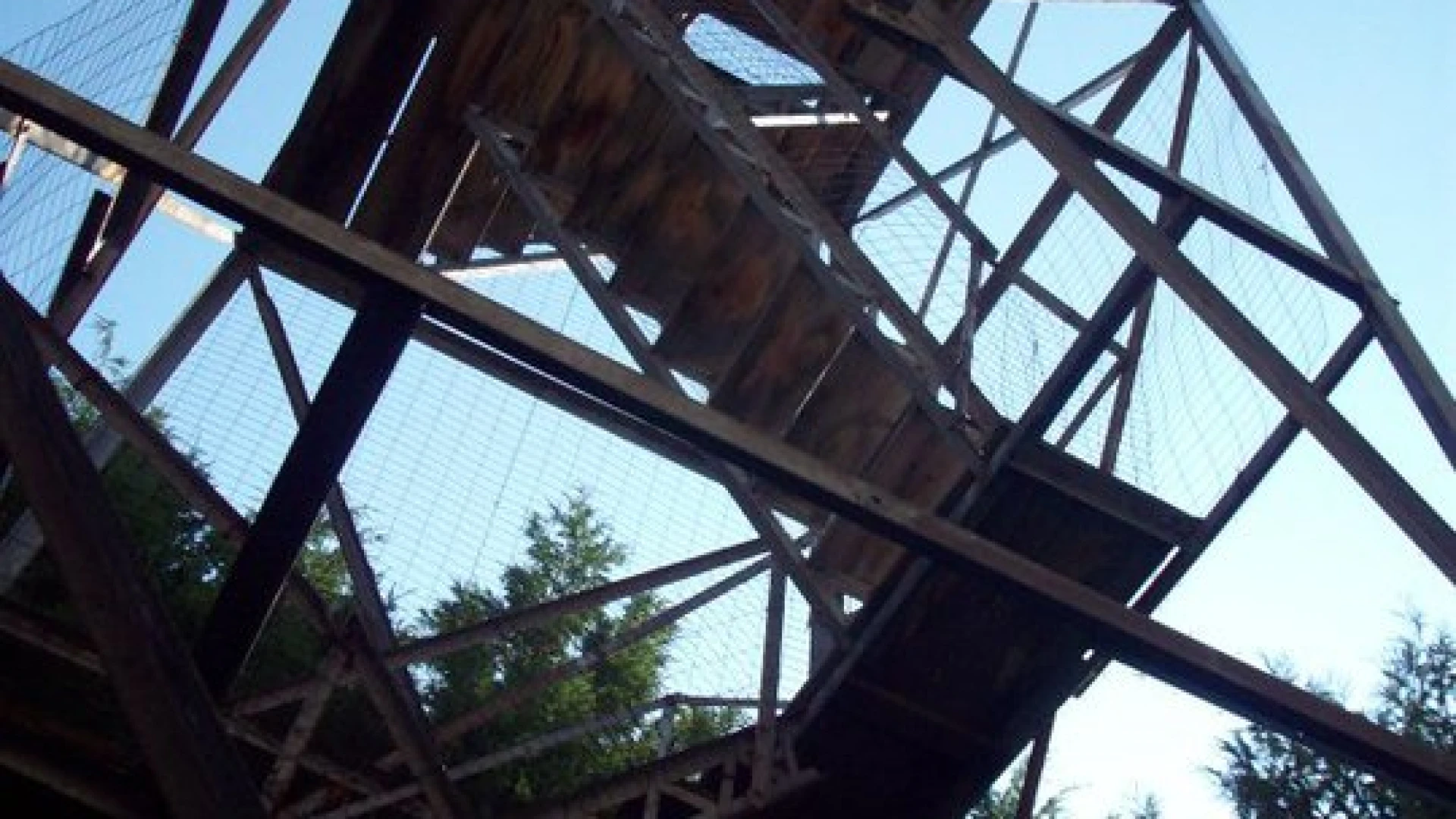
We are currently updating our fire tower exhibit at the Adirondack History Center Museum. In 1979 the Historical Society purchased two fire towers that the DEC had dismantled. The towers formerly stood on Kempshall and West Mountains in Hamilton County. The best parts of the two structures were combined to produce one. The museum will be opening for the 2012 season on May 26, and the fire tower will be available for visitors to climb.
"Planes Replace Fire Towers"
by Marjorie Porter
September 22, 1971--Many things have changed, and will change in the Adirondack region, home of the ancient mountains. The unspoiled forest wilderness of the Indian and pioneering white man has gone, (thanks is given for the Adirondack Park and the recently activated Adirondack Park Agency headed by Richard Lawrence Jr.,Elizabethtown). The clear mountain lakes, ponds and tumbling streams are polluted and disturbed by racing motors of assorted boats and harassed by city dwellers, with two few exceptions. Less and less often it is possible to explore on meandering back roads still unpaved, and increasing thousands of people take advantage of improved town, county, state highways, let alone shuttling via a scenic Northway from metropolitan centers to Canadian meccas.
Still and all, this continues to be white pine country and on all sides "old timers" are at a loss to be sure of favorite childhood spots on upland slopes long since cleared and cultivated on Grandpa's farm. Here, the air is sweet with the essence of balsam, hemlock and pine, a canopy of green is spread by lacy or feathery branches hobnobbing cheek by jowel, and the quiet speaks of earlier times.
The crowding evergreen growth speaks of something else, also, a beneficent change for all who reside, visit or follow trails in the Adirondacks- the control of forest fires. Time was when annual desolation was almost inestimable, ancient trees blazed high against the sky, wildlife scattered in terror and Adirondack people fought fast-spreading creeping fire without avail looking only to rain for relief. For miles, the air was heavy with the smell of smoking pines and the haze of their tragic destruction hung over hill and valley. Then, in 1909, came a great advance in respect to forests! A committee, headed by John C. Agar of New York, had been set up in 1908 to draft fire protection amendments to the Forest, Fish and Game Law. These recommendations were passed by the State Legislature in 1909 inaugurating an intelligent, comprehensive and efficient system of fire control with emphasis laid on prevention and early detection. This meant the establishment of observation stations on the top of mountains, connected to telephone to the nearest settlement. Watchers lived in cabins or tents near their stations and were on duty continuously during the fire season.
The fire observers were equipped with field glasses and oriented topographic maps of the visible area, often 100,000 acres or more. About 15 stations were erected in 1909 and by 1918 there were 52 of these. The first ones were just wood platforms but these were followed by substantial steel towers with enclosed shelters at the top. The Osborne Fire Finder was added to the equipment. Other valuable features of the new law were activated. The first observation station in New York was in use on Mt. Morris near Tupper Lake in 1910 and one on Poke-O-Moonshine in 1912. In 1971 only seven towers in Essex, Clinton and Franklin County were still used.
At present the New York State Department of Environmental Conservation is using small, rugged powerful planes above the Adirondack forests to search out signs of fire. Cost of this service for fire control is estimated to be less than the $6,000 required to keep one fire tower in use for one season. New York State Conservation Dept. personnel are satisfied so far with the aerial fire spotting system, and are working on a final reporting plan. The fire tower system, over half a century old, is reluctantly given up by a segment of the public which is likely to admit that the use of planes in reporting forest fires may be the answer. Towers not in use have been locked up and steps removed. Others have been pulled down and the observer's cabin demolished.
Press Republican
You can find more information about area fire towers at the Adirondack Fire Tower Association website https://visitadirondacks.com/recreation/hiking/fire-towers. There is also a great book on fire tower trails called "Views from on High: Fire Tower Trails in the Adirondacks and Catskills" by John Freeman. This book is currently being reprinted and will be available soon with updated information. The guide describes fire tower trails, how to get to each, the condition of the tower, and whether or not it's open to the public. There are currently four restored (and climbable) fire towers in Essex County and another two are set to be restored.
ADIRONDACK HISTORY CENTER MUSEUM
ESSEX COUNTY HISTORICAL SOCIETY
PO Box 428, 7590 Court Street
Elizabethtown, NY 12932
www.adkhistorycenter.org
Research Queries: research@adkhistorycenter.org
General Information: echs@adkhistorycenter.org